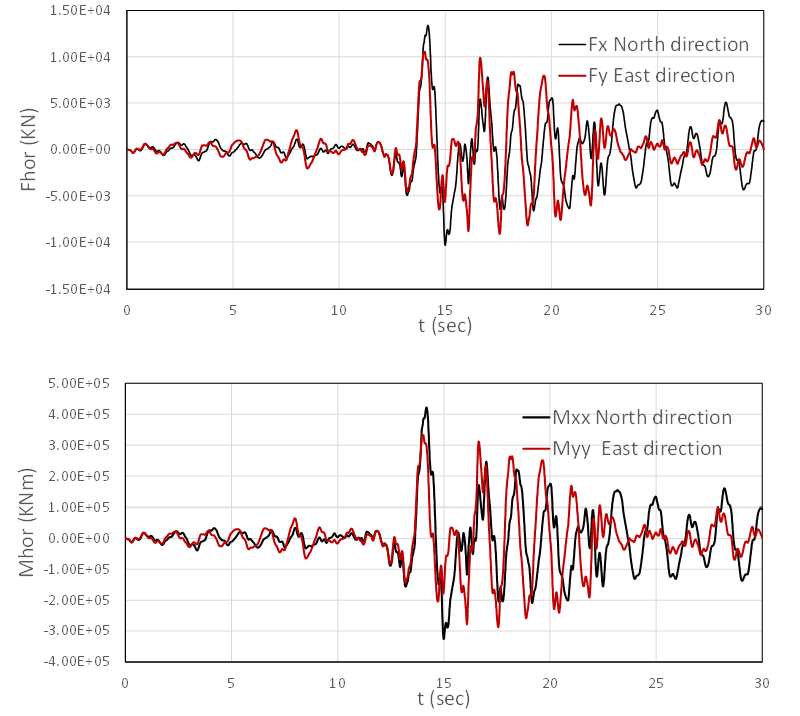Time history analysis of 15 story building foundation excited with M7.8 Feb. 2023 Syria-Turkey Earthquake
On 6th of February of 2023 an earthquake of 7.8 magnitude occurred in the region of the southeast Turkey followed by a 2nd main shock of 7.5 magnitude 9 hours later. The earthquake had a devasting effect on numerous cities in the region, killing over 17 000 people. Most of the earthquake induced collapses where associated with inefficient or no implementation of seismic design standards in the building construction (i.e. slabs directly supported on beams, lack of shear walls, thin columns with questionable longitudinal reinforcement, non-existing column confinement with limited/no shear reinforcement in columns). However, even if damage was mainly associated with the superstructure of the buildings, the unusually high intensity of the earthquake, surpassing a peak ground acceleration of 1g in multiple recording stations, is of a particular interest for soil structure interaction. In the current case study, a 15 story archetype building structure is excited with the 1st 7.8 magnitude mainshock excitation and the pilegroup foundation time domain behavior is assessed with the DeepFND software.
A. EARTHQUAKE EXCITATION
The 1st mainsock was captured by multiple stations located within the proximity of the earthquake epicenter. The North, East and vertical component of the surface acceleration recorded in station 3125 is selected as the excitation of the current study. The acceleration time series are illustrated in figure 1.

B. SUPERSTRUCTURE MODEL
For the superstructure a steel frame archetype building with 15 stories is selected, previously assessed under the excitation of multiple high intensity earthquakes in [1]. A simplified single degree of freedom model is considered for the superstructure with an effective mass MSDOF=2116.8 ton, and lateral stiffness KSDOF=51759.38KN/m, matching the documented 1st natural frequency f=0.67Hz., introduced in the superstructure model by assigning a nonlinear spring system at the base of the SDOF version of the building structure. The pilegroup foundation model is constructed in DeepFND (fig. 3) and the force to displacement and moment to rotation relationship is extracted through a pushover analysis as illustrated in Figure 4. The resulting moment and horizontal forces transferred from the superstructure to the foundation system are illustrated in Figure 5.




C. ANALYSIS RESULTS
The analysis results for the foundation are illustrated in the following figures. The deformed shape and contour of displacement of the FEM model is depicted in figure 4 and a comparison of the simulated settlement contour and measured settlement contour are depicted in figure 5.



D. CONCLUSIONS
The Finite element analysis method implemented in DeepFND is utilized to model the seismic response of a pile supported 15-storey building subjected to the 7.8M earthquake in Turkey. The pile foundations experienced significant tension forces, and bending moments in the pile foundations were close to the ultimate structural pile strengths. Vertical displacements were up to 5 cm, and lateral in the order of 3 cm. Based on this response, it appears that while the structure would experience some damage it would survive the earthquake whereas a structure solely on a mat foundation would likely tip over.
E. REFERENCES
[1] Effect of Seismic Soil–Pile–Structure Interaction on Mid- and High-Rise Steel Buildings Resting on a Group of Pile Foundations, Mohsen Bagheri, S.M.ASCE; Mehdi Ebadi Jamkhaneh, S.M.ASCE; and Bijan Samali, Ph.D.
Book A free web presentation:


